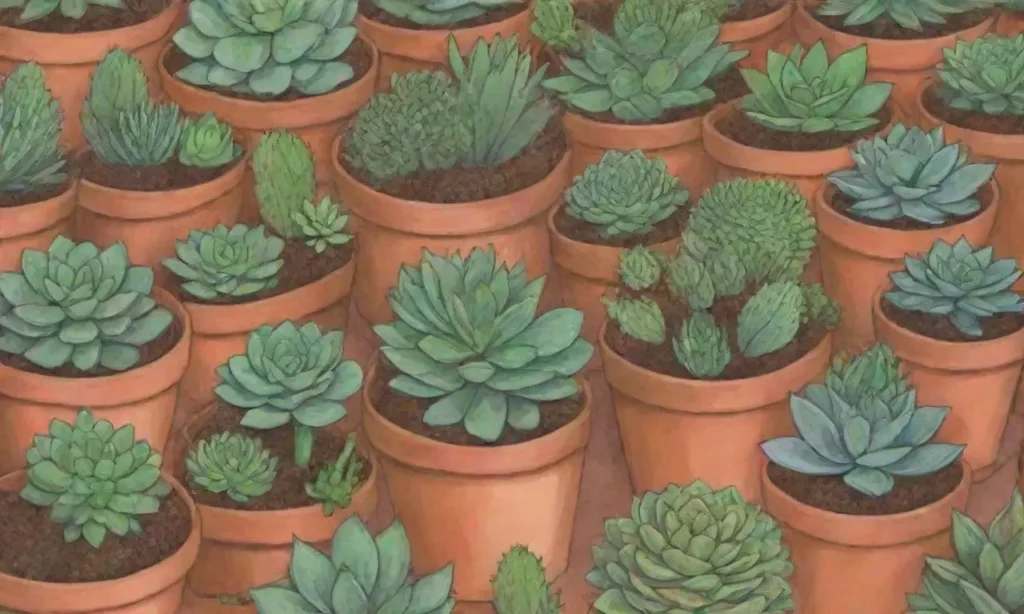
Creating Eco-Conscious Communities Through Succulent Gardening

Introduction
In an era where concern for the environment has reached a fever pitch, many individuals and communities are discovering the profound impact that sustainable practices can have on ecological health and social well-being. One such practice that has gained traction is succulent gardening, which not only promotes eco-friendly habits but also fosters a sense of community. This article explores how engaging in succulent gardening can lead to the development of eco-conscious communities while highlighting the environmental benefits and social dynamics inherent in this green endeavor.
In the following sections, we'll delve into the numerous advantages of succulent gardening, delve into the essential aspects of creating a community garden, and provide practical tips for individuals and groups eager to join this sustainable movement. Each segment will focus on the interplay between succulents and their environments, illustrating how these efforts can enhance both local ecosystems and social ties among residents.
The Benefits of Succulent Gardening
Succulent gardening boasts an array of benefits, making it a fantastic choice for both seasoned gardeners and newcomers alike. One of its most significant advantages is its water efficiency. Succulents are well-known for their ability to thrive in arid conditions, as they are adapted to store water in their leaves, stems, or roots. This characteristic makes them incredibly suitable for regions impacted by drought or areas with water restrictions. By minimally using water compared to traditional gardens, succulent gardens contribute to responsible water management and reduce waste.
In addition to water conservation, succulent gardening promotes biodiversity. When incorporated into a community landscape, succulents can attract various pollinators, including bees and butterflies, essential for maintaining a balanced ecosystem. Contrary to the stereotype of being low-interest plants, the stunning variety of succulents offers vibrant colors and textures that can transform any space into a visual oasis. This diversity not only enhances the aesthetic appeal of a community but also encourages local wildlife to thrive.
Moreover, cultivating a succulent garden can foster a greater awareness of sustainable practices within the community. As individuals engage with these plants, they often share knowledge about caring for them sustainably—using organic fertilizers, recycling containers, or even repurposing old materials for planters. This sharing of information contributes to a collective understanding and practice of eco-conscious gardening, ultimately leading to a more informed and caring community.
Creating a Community Succulent Garden
Building a community succulent garden involves collaboration, vision, and a shared commitment to eco-consciousness. The first step in establishing such a garden is gathering interested community members. Hosting an initial brainstorming session can inspire ideas and establish common goals. Participants can discuss potential locations, the types of succulents to cultivate, and any additional features such as pathways or seating areas. Having a diverse group of individuals can contribute to unique perspectives and innovation, enriching the project further.
Once a core team is formed, the next step involves identifying a suitable site, whether it's a vacant lot, a community park, or an underutilized space. The chosen site should receive ample sunlight and have good drainage, which are crucial for succulent health. Acquiring the necessary permissions from local authorities will be essential, as this promotes civic engagement and ensures cooperation from all stakeholders.
 Effective Ways to Reduce Carbon Footprint While Growing Succulents
Effective Ways to Reduce Carbon Footprint While Growing SucculentsPlanning the layout is vital in successfully executing the garden. Deciding on plant arrangements can result in a garden that is visually appealing while allowing for optimal growth. Grouping various types of succulents according to their needs for sunlight, water, and soil conditions will enhance their longevity. Including native plants can further support local wildlife and create a more sustainable ecosystem. Additionally, incorporating pathways made from recycled materials or wood chips can facilitate a pleasant walking experience while blending organically with the garden’s aesthetic.
Engaging the Community
Once the foundation of the community succulent garden is established, it’s time to actively engage with other community members. This may involve organizing workshops where individuals can learn about succulent care, propagation techniques, and sustainable practices. Such educational events not only impart valuable skills but also strengthen community ties and encourage active participation. Moreover, children and families can be included in these sessions, fostering a sense of stewardship for the environment from an early age.
Periodic garden maintenance days can also offer opportunities for engagement. Members can come together to help prune, plant, and share their experiences. Fellowship often blossoms during these collective efforts, as individuals bond over a shared love for plants and nature. Additionally, these events serve to keep the garden in good condition, thus ensuring that it remains a vibrant biodiversity hub.
Outreach is another critical aspect of engaging the community. Distributing flyers or utilizing social media platforms can attract more individuals to the garden’s activities, and periodic open days can invite newcomers to explore the space. Collaborating with local schools or organizations can also encourage intergenerational and cross-cultural involvement, ensuring a wider range of perspectives and contributions.

The impact of succulent gardening stretches far beyond individual gardens. On an environmental level, creating eco-conscious communities through succulent gardening methods contributes significantly to local fauna while also minimizing urban heat island effects. The presence of plants can naturally cool surrounding areas, a trait especially valuable in urban landscapes, which face increased temperatures due to concrete and asphalt.
Community gardens also provide spaces for residents to connect with nature, which is often lacking in urban settings. This accessibility to green spaces encourages outdoor activities, improves mental health, and fosters physical well-being. Studies have shown that spending time in nature can lead to reduced stress, increased creativity, and a sense of belonging—qualities that are essential for enhancing community bonds.
 The Importance of Succulent Diversity in Sustainable Ecosystems
The Importance of Succulent Diversity in Sustainable EcosystemsFurthermore, these gardens can evolve to serve as educational tools for local schools and organizations. Teachers can utilize the garden as a living laboratory, allowing students to observe ecological principles, engage in hands-on learning, and understand the importance of sustainability. As knowledge circulates within and outside the community, the collective responsibility toward a sustainable future is reinforced, creating a shared vision that ultimately benefits everyone involved.
Sustainability Through Collaboration
The essence of eco-conscious communities lies in collaboration. Partnering with local nurseries can support succulent gardening initiatives while ensuring that community members have access to the finest materials and information. Fundraising or grant applications can also increase resource availability, allowing for successful projects and long-term sustainability.
Local businesses can contribute to the community by sponsoring events or offering discounts on gardening supplies in exchange for promotion. Collaborative efforts increase visibility and engagement, aligning individual and corporate values towards mutual goals. Such partnerships not only benefit the community but also encourage businesses to understand their role in promoting sustainability.
A feedback loop is crucial for the ongoing success of these gardening initiatives. By regularly assessing what works and what needs improvement, communities can adapt their efforts to respond to changing needs and conditions. Feedback sessions can serve as a platform for dialogue, paving the way for innovative ideas that can enhance the garden experience for all involved.
Conclusion
Creating eco-conscious communities through succulent gardening is a multifaceted approach that reaps immense rewards in terms of environmental sustainability, social bonding, and community empowerment. Through practices that minimize water use, promote biodiversity, and encourage collective action, communities can work together toward a healthier planet.
As the benefits of implementing a succulent garden expand, so too does its capacity for fostering connections among residents. Each individual contributes their unique skills and perspectives, which enriches the community tapestry. The importance of sharing knowledge and experience cannot be overstated. After all, it is through the sharing of wisdom that we cultivate a greater appreciation for the natural world surrounding us.
Ultimately, succulent gardening is more than just a hobby; it is a vehicle for creating lasting change. It serves as a gentle reminder of our responsibility towards our environment and each other. For anyone looking to plant the seeds of sustainability, starting a succulent garden is an excellent way to sow community spirit while nurturing a greener future.
 Creating a Sustainable Succulent Ecosystem in Your Home
Creating a Sustainable Succulent Ecosystem in Your HomeIf you want to read more articles similar to Creating Eco-Conscious Communities Through Succulent Gardening, you can visit the Eco-friendly practices category.

You Must Read